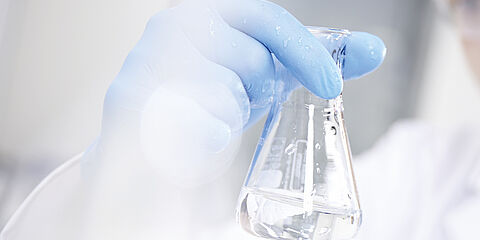Laboratory analysis of pharmaceuticals on Burkholderia cepacia
Burkholderia cepacia is a bacterial species of increasing importance for the pharmaceutical, OTC and cosmetics industries. In recent years, both sterile and non-sterile drugs had to be recalled from the market due to contamination by this bacteria.

The United States Pharmacopeia (USP) has reacted to this and published a new general chapter on the subject, the USP <60>. The chapter became official on December 1, 2019 and describes tests to determine the presence or absence of the Burkholderia cepacia Complex (Bcc).
The WESSLING experts for pharmaceutical analysis have successfully established the USP methods in their laboratory. They analyse process water, starting substances and end products for contamination with Bcc according to USP specifications.

The Burkholderia cepacia complex (Bcc) is a group of 17 closely related bacterial species. They can pose a serious medical risk to populations that are more susceptible to infection or immunocompromised. Bcc are Gram-negative aerobic bacteria found in soil and water. Water, in turn, is the most common raw material for pharmaceutical formulations. Since basically any water source in a manufacturing process can contain Bcc, Bcc can easily contaminate sterile and non-sterile pharmaceutical dosage forms as well as cosmetics.
This applies in particular to aqueous preparations for oral, oromucosal, nasal and cutaneous use. The bacteria can survive for many months even under harsh conditions. They are resistant to many antibiotics. Therefore, despite the use of one or more preservatives, products can become contaminated by Bcc and form highly resistant biofilms. Non-sterile drugs are exposed to a higher risk of contamination than sterile dosage forms.
Your contact
- Dr. Maik Siebelmann
- +49 251 13 39 880
- pharma@wessling.de




